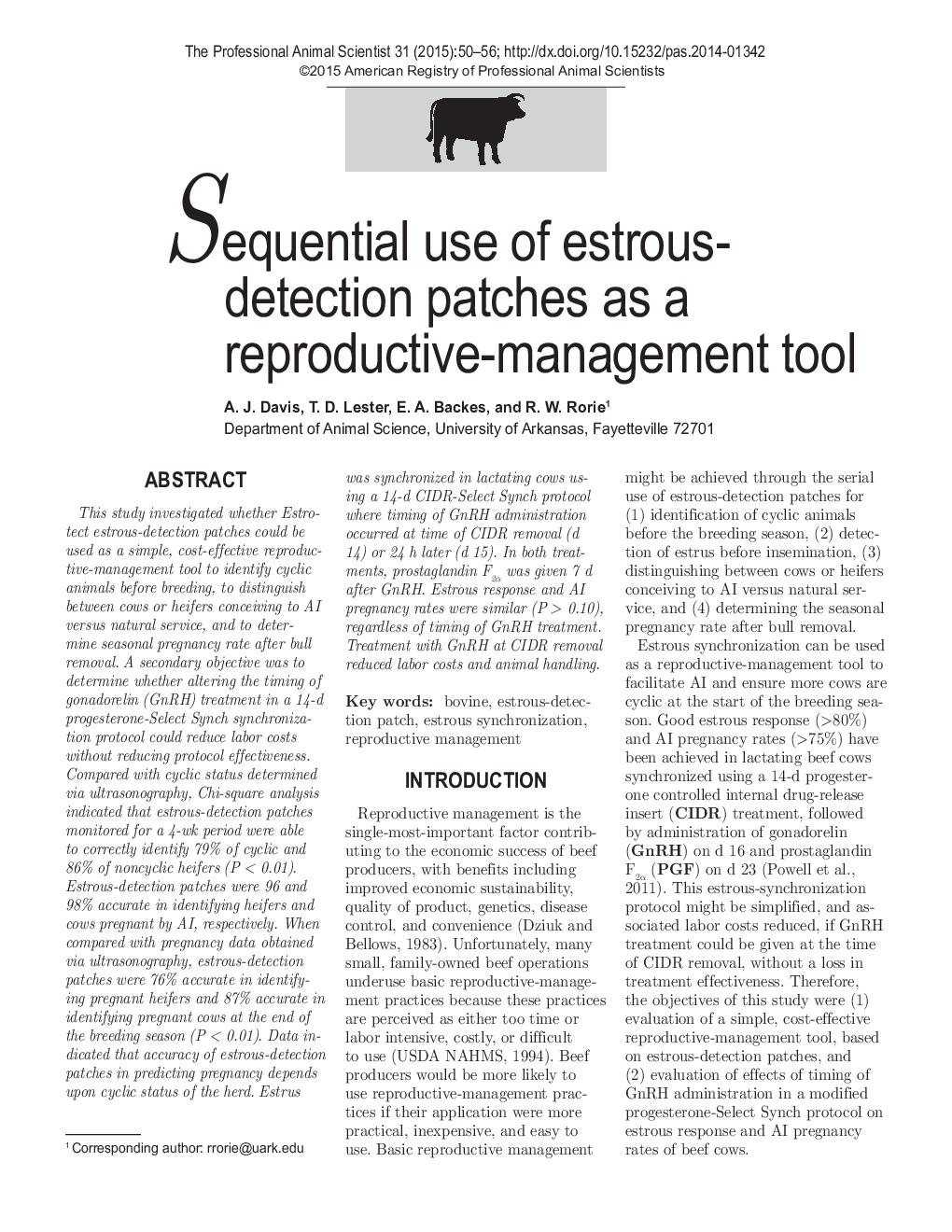| Article ID | Journal | Published Year | Pages | File Type |
|---|---|---|---|---|
| 10161833 | The Professional Animal Scientist | 2015 | 7 Pages |
Abstract
This study investigated whether Estrotect estrous-detection patches could be used as a simple, cost-effective reproductive-management tool to identify cyclic animals before breeding, to distinguish between cows or heifers conceiving to AI versus natural service, and to determine seasonal pregnancy rate after bull removal. A secondary objective was to determine whether altering the timing of gonadorelin (GnRH) treatment in a 14-d progesterone-Select Synch synchronization protocol could reduce labor costs without reducing protocol effectiveness. Compared with cyclic status determined via ultrasonography, Chi-square analysis indicated that estrous-detection patches monitored for a 4-wk period were able to correctly identify 79% of cyclic and 86% of noncyclic heifers (P < 0.01). Estrous-detection patches were 96 and 98% accurate in identifying heifers and cows pregnant by AI, respectively. When compared with pregnancy data obtained via ultrasonography, estrous-detection patches were 76% accurate in identifying pregnant heifers and 87% accurate in identifying pregnant cows at the end of the breeding season (P < 0.01). Data indicated that accuracy of estrous-detection patches in predicting pregnancy depends upon cyclic status of the herd. Estrus was synchronized in lactating cows using a 14-d CIDR-Select Synch protocol where timing of GnRH administration occurred at time of CIDR removal (d 14) or 24 h later (d 15). In both treatments, prostaglandin F2α was given 7 d after GnRH. Estrous response and AI pregnancy rates were similar (P > 0.10), regardless of timing of GnRH treatment. Treatment with GnRH at CIDR removal reduced labor costs and animal handling.
Related Topics
Life Sciences
Agricultural and Biological Sciences
Animal Science and Zoology
Authors
A.J. Davis, T.D. Lester, E.A. Backes, R.W. Rorie,
